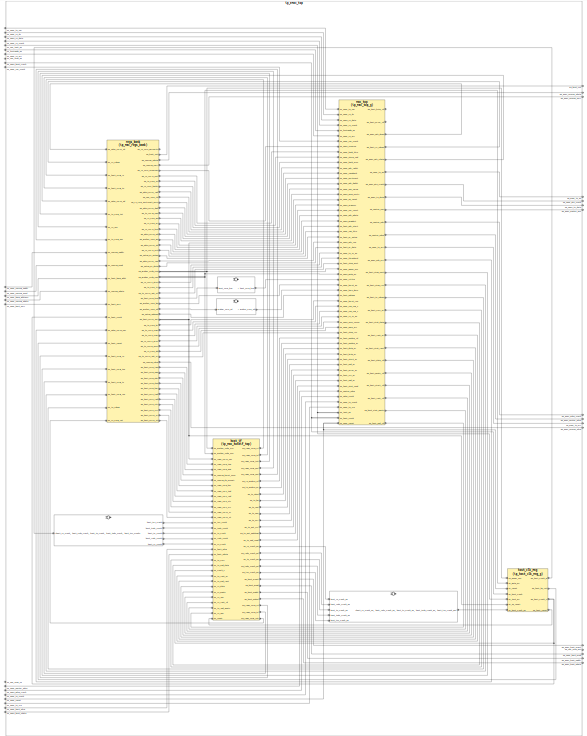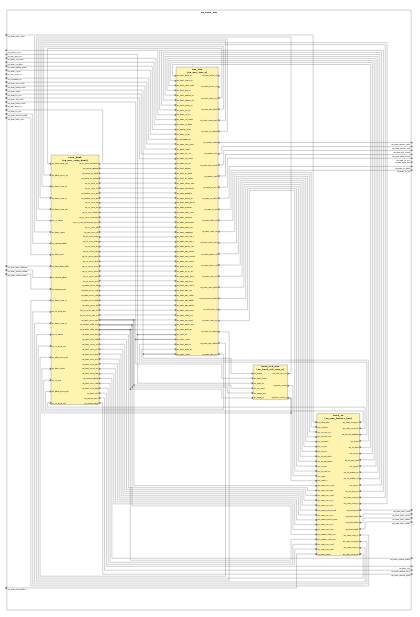Diagrams
Specador has the ability to automatically generate diagrams after the compilation is done.
Tip
Diagrams can be zoomed, panned or opened in full screen for better inspection. Click on a class or block to jump to the chapter where it is documented.
Type |
Diagram |
Observations |
|---|---|---|
Block Diagram |
Presents all the ports and parameters, highlighting busses and clocks
|
|
Flow Diagram |
Presents a high level view of internal connectivity. Multiple connections from one instance to another are collapsed in a single directional edge
|
|
Schematic Diagram |

|
Presents the internal structure (ports, sub-instances, combinational and sequential logic and connections)
|
Sub-Instances Diagram |

|
Presents the internal structure without combinational and sequential logic
|
Finite State Machine Diagram |
Presents states and transitions by analyzing all the assignments and conditions in which a state variable is used
|
|
WaveDrom Diagram |
WaveDrom is a tool that draws timing diagrams (waveforms) from a simple textual description written in JSON.
To export such diagrams, they must be enclosed between
@WAVEDROM_START and @WAVEDROM_END pragmas inside comments.Note Specador uses WaveDrom 3.5.0. |
|
Bit Field Diagram |
Available for packed data types and UVM registers. Note Diagrams are rendered using the BitField library. |
|
UML Inheritance Diagram |
Presents the inheritance hierarchy including the derived classes and the members of the class |
|
UML Collaboration Diagram |
Presents all associations with other classes |
|
UVM Components Diagram |
UVM Components Diagrams help you inspect and document the structure of a verification environment
|
|
External Generated Diagram |
In order to generate diagrams using external scripts, the description needs to be enclosed between Available options when writing custom diagram descriptions:
Important Specador will invoke the generator as follows: @program @input_file @output_file @args SystemVerilog module parameters and macros default values can also be passed to the input description using the following syntax:
|